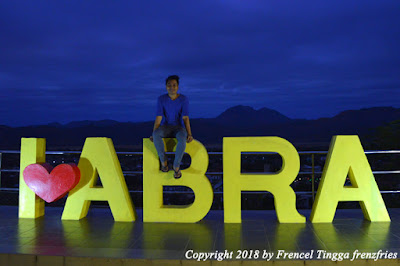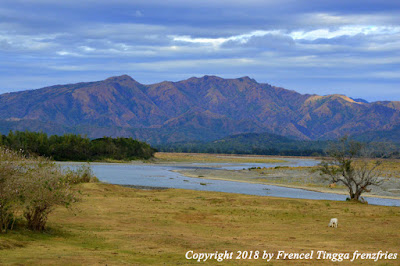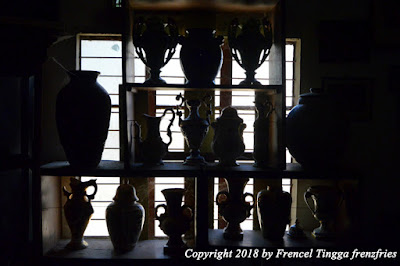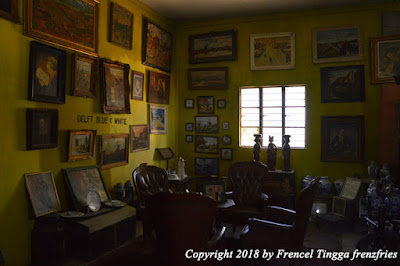Everything in Apao was
howling – the mountain, the wind, my heart. But the wind, literally.
If you want to find a beautiful, unfamiliar place to get lost momentarily, this place is the answer. It is one of the hidden wonders of Abra, a landlocked province in the western side of Cordillera Region, just eight hours away by land travel from Manila.
My recent DIY visit to Abra dispelled all the peace and order situation problems that I’ve heard in the past. It is generally safe to travel around the area, and the locals very friendly. My two-day adventure brought me to Bangued, Tineg, Tayum, La Paz, Lagayan, Lagangilang, Danglas, and Lagayan; each town boasting of either cultural or natural attractions (or both).
Bangued is the capital of Abra, and also served as my homebase. I stayed at Hollanda Residencia Homestay, a nice two-storey house owned by OFW couple. Interestingly, the owners work in Holland, that’s why the place was named after the “Land of Tulips”.
Places of interest in Bangued include the Victoria (Cassamata Hill) Park, which offers a panoramic view of the town below and the famous Sleeping Beauty mountain; the San Lorenzo Ruiz Shrine, a brick cemetery chapel with twin belfries and a triangular pediment; and the river huts along Abra River under the Calaba Bridge, which make for a great picnic spot.
Their pancit miki, a popular local delicacy made of miki noodles and pork broth flavored by annatto seeds or atsuete, is a must try.
In Lagangilang, along the Abra-Kalinga Road is the Don Mariano Marcos Bridge which connects the towns of Tayum and Dolores. From the bridge, I enjoyed gazing at the cows down below, a scene depicting a simple, bucolic life, away from the stress and pollution of the city.
The neighboring Tayum is like the mini-Vigan of Abra with its few remaining old-houses, a 19th-century Baroque church (Sta. Catalina de Alejandria Parish Church), and museum (Gabriela Cariño Silang Gallery of Fine Arts). The latter, which is the ancestral house and former headquarters of Gabriela Silang during the Philippine Revolution, houses the art pieces and exemplary personal collection of retired Philippine Ambassador Rosario Cariño, descendant of Gabriela.
In Bulbulala, La Paz, Naty Quiday has kept the old-tradition of loom weaving alive and vibrant. Her family’s handloom weaving business “Leila Loomweaving Center” produces colourful woven fabric called abel Iloko which are made into textile products such as office uniforms, costumes, blankets, polo shirts, scarfs, pillowcases, table runners and placemats.
There is a scenic river near the Center. I saw kids taking a bath while their mothers doing the laundry. Men also washed their motorcycles in the river.
In Lagayan, the Lusuac Spring, a spring with cold mountain waters - is a favorite day-trip destination among the locals.
In the highland of Danglas, along the scenic and winding Ilocos Norte-Abra road, are the Sagao View Deck, Dadamuen View Decks and Picnic Grounds, and the Pine Forest (Little Baguio of Abra) in Nagaparan. I like the cool weather of Nagaparan, as well as the relaxing view of verdant mountains, rice terraces and pine trees. The place is ideal for family picnics.
Tineg, the farthest I’ve been to, is the highlight of my trip. It wasn’t an easy, smooth ride going to this place near the border of Kalinga. But the town is blessed with stunning natural beauty – rivers, mountains, caves and waterfalls. Even its municipal hall – the Balay Ti Tineg, is one of the most picturesque town halls that I’ve seen.
Abra recently became more exciting and visible in the tourist map because of Kaparkan Falls, located in one of the remotest barangay of Tineg. But the falls is open only during the rainy season. Still, I was able to explore the town’s two more equally beautiful destinations – the Apao Rolling Hills and the Piwek Rock Formations.
The Apao Rolling Hills, offers a dramatic landscape and picturesque contours of chocolate-colored rolling hills and mountains. During the rainy season however, they change colors to refreshing green. It is in Apao that I’ve experienced how fierce the Tineg wind is (parang nag join forces na Hanging Amihan and Habagat) kahit sobrang tirik ng araw.
Further down Apao, is a small river community of Alaoa.
A short trek with river crossing via bamboo raft, from the village leads to Piwek Rock Formations – stunning limestone formations that line the riverbanks of Salakop. The rock formations remind me of Minalungao and Daraitan; the pristine, waters of the river almost freezing cold.
My Abra backpacking adventure is truly memorable. It’s not for the fainthearted. And medyo masakit sa kasingit-singitan riding a habal-habal and being on a dirtroad most of the time.
Someday soon, I want to return to explore Kaparkan Falls and Kili Hot Springs. Abra
is totally #Abramazing.
From Manila, take Bangued-bound bus. There are three bus companies that
offer daily trips to Bangued - Partas, Viron Transit or Dominion Bus Lines; all
the bus stations in Cubao. Travel time takes 8-10 hours (better take the bus
passing TPLEX for faster trip; also take the night bus to arrive in Bangued
early morning). Recommended two-day tour: First day – whole day habal-habal
tour to Apao Rolling Hills and Piwek Rock Formations (which is 2-3 hours away
from Bangued) and Tayum. Second day – half day habal-habal or tricycle tour to
Pine Forest (which is an hour away from Bangued), Loom Weaving Center, Lusuac
Spring and Bangued. Contact Dykath Molina, tourism coordinator of Abra (thru FB
or mobile no.: 0927-7725856) before going for a more convenient tour. She can
arrange the tour (habal habal or monster jeep for big groups) and recommend accommodations.
Meeting place of those who will avail the tour is at DPWH Complex, which is
just a short tricycle away from the town center or bus stations in Bangued. Recommended
place to stay - Hollanda Residencia Homestay in Bangued (may be contacted thru
FB or thru Dykath).























































1 comment:
I really love your site.. Very nice colors & theme. Did you
make this site yourself? Please reply back as I'm wanting to create mmy very own website
and want to learn where you got this from or exactly
what the thme is named. Cheers!
Post a Comment